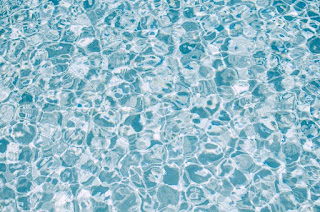Whilst visiting Museum Island, it would be foolish not to spend some time in the Pergamon Museum (http://www.smb.museum/smb/standorte/index.php?lang=en&objID=27), renowned for it's wonderful collections. It was very hard not to be blown away by the sheer scale of some of the pieces on display, notably the Pergamon altar, the market gate of Miletus, and the Ishtar gate. Although these colossal exhibits were very impressive (I also found the 'dragons' in the decorations on the Ishtar gate, with the head and body of a snake, the front legs of a lion, the back legs of a bird and the tail of a scorpion, rather sweet!), I found the Uruk exhibition the most interesting, since it displayed artifacts of a civilization I have never studied or explored in any great detail. I love seeing examples of writing from the ancient world, and so the extensive inscriptions on many of the pieces in this exhibition were very exciting, though I was unable to actually read them. Before my trip to Berlin, I'd been told many great things about the Pergamon museum, so despite enjoying the displays I saw there, I was slightly disappointed that a) there weren't more things on display, and b) the air conditioning system seemed to be on strike--less than ideal on a very hot day!
The final museum I visited on Museum Island was the Altes Museum (http://www.smb.museum/smb/standorte/index.php?lang=en&objID=24). This was probably my favourite of the four museums I visited, since the collections there were the most closely linked to the areas I am studying. I spent a lot of time in the Greek galleries, in preparation for some of my modules next year, and also encountered some pieces which fell under topics I have already studied, such as Greek drinking cups and artifacts from Greek sanctuaries, so it was nice to be able to appreciate them with existing insight. I was also happy to find artifacts which related to my volunteering work at Liverpool World Museum, particularly ash chests. I had cataloged images of Roman ash chests from the Ince Blundell collection at the World Museum, so it was great to see some more chests from the Roman period, and look at the various decorations on each one. Not only did the Altes Museum have a collection of Roman ash chests, but also some from the Etruscan period, which I had not seen before. It was interesting to compare the styles of the ash chests, and see similarities between the two cultures.
 | |
| Clockwise from top left: Pergamon exterior, Miletus market gate, Ishtar gate, basalt carving from Uruk. |
The final museum I visited on Museum Island was the Altes Museum (http://www.smb.museum/smb/standorte/index.php?lang=en&objID=24). This was probably my favourite of the four museums I visited, since the collections there were the most closely linked to the areas I am studying. I spent a lot of time in the Greek galleries, in preparation for some of my modules next year, and also encountered some pieces which fell under topics I have already studied, such as Greek drinking cups and artifacts from Greek sanctuaries, so it was nice to be able to appreciate them with existing insight. I was also happy to find artifacts which related to my volunteering work at Liverpool World Museum, particularly ash chests. I had cataloged images of Roman ash chests from the Ince Blundell collection at the World Museum, so it was great to see some more chests from the Roman period, and look at the various decorations on each one. Not only did the Altes Museum have a collection of Roman ash chests, but also some from the Etruscan period, which I had not seen before. It was interesting to compare the styles of the ash chests, and see similarities between the two cultures.




Comments
Post a Comment